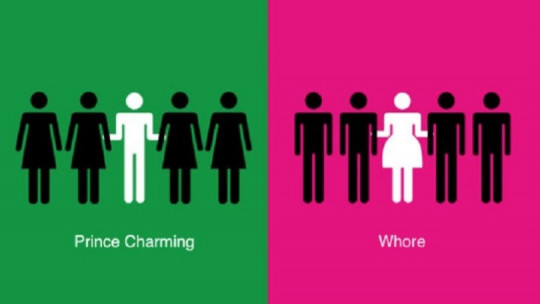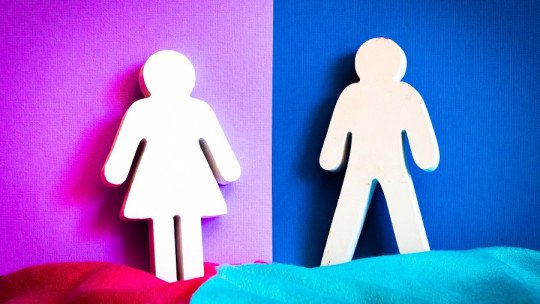
We live in a patriarchal and sexist society that has been built through gender differentiation in all its areas, always putting the female gender in an inferior position compared to the male gender. This is produced and maintained through gender socialization, unconsciously incorporating into our education and daily inputs the positive valorization of the masculine gender and the punishment of feminine attitudes.
A very simple way to represent and become aware of this is through the representation of gender in different professions or jobs. Nowadays, jobs that represent care, such as those derived from nursing or psychology, are fundamentally carried out by women, compared to the immense male presence in representative jobs in the construction or industrial industry.
Fortunately, times change and we become more aware of the gender stereotypes to destroy. One way to break these gender stereotypes and beliefs developed as a result of gender socialization is by becoming aware of the presence of gender biases in different contexts, learning about the ways in which gender modulates our actions and differentiates people, constantly undervaluing women.
In this article, we are going to talk about gender biases in the world of Medicine proposing different examples that make us reflect on the equal treatment or not of men and women in the medical and clinical sector and in the diagnosis and development of treatments for sick people.
What are gender biases?
Gender biases in the field of Medicine can refer to the existence of gender-based disparities and biases on the part of medical personnel that can influence medical care and biomedical research These biases originate, as we have been discussing, through gender socialization and the perpetration of gender stereotypes and expectations. Projected into the diagnosis of diseases, the same symptoms are often assumed for men and women, avoiding the gender perspective and developing unidimensional approaches for diagnosis and treatment.
It has been concluded that gender stereotypes have a significant impact on medical care. For example, men’s strength and resistance to pain are assumed, while women are perceived as more sensitive. These influence the evaluation and treatment of patients’ symptoms, being able to discard those that do not fit gender stereotypes and “what is expected” of a man or a woman.
Examples of gender bias in the field of Medicine
The consequences of gender bias in Medicine are harmful to people’s health They can lead to erroneous diagnoses or delays that make subsequent treatment difficult. Furthermore, many activists in the scientific community denounce the lack of a gender perspective in biomedical research, making a dent in the maintenance of stereotypes and the hiding of the reality of women.
Therefore, it is important to know several examples of gender bias in the world of Medicine. Let’s see some of them, classified.
Gender bias in medical diagnosis
1. Underestimation of symptoms
Scientific evidence highlights the existence of an underestimation of symptoms in women compared to men. This refers to minimizing their experiences or not considering them as serious as they may appear. This entails significant dangers due to the possibility of a delay in diagnosis or even in the naming of their symptoms as “normal” or attributed to psychological causes such as anxiety or stress.
2. Probability of diagnostic tests
Some studies have shown that women are less likely to be referred for diagnostic testing compared to men. This may be related to the previous point, since due to the symptoms not being considered relevant, diagnostic tests are delayed or overlooked. Scientific literature has also made reference to the lack of knowledge about the differences in disease presentation in women which leads to not referring diagnostic tests or not doing so with the truly appropriate ones.
3. Diagnosis of mental illnesses in women
There is a bias in the diagnosis of mental illnesses in women, receiving a much higher diagnosis of these disorders compared to men, especially in reference to depression or anxiety. This may be related to prejudices that interpret emotional symptoms as generalized among women, in addition to the lack of emotional expressiveness in men for fear of appearing weak or inferior. Although things are changing, The origin of psychopathology can be very easily related to gender stereotypes hand in hand with psychological diseases such as hysteria or histrionics described until the mid-19th century and linked exclusively to women.
Gender bias in medical treatment
1. Different access to treatments
There are disparities in access to certain medical treatments between men and women. For example, in some cases, women face barriers to accessing reproductive health services, such as contraceptives or sterilization procedures, linked to prejudices regarding motherhood and women’s responsibility.
2. Different prescription of medications
In relation to the previous point, clinical research has also referred to the inequality in obtaining medication prescriptions based on the gender of patients For example, studies have shown that men are more frequently prescribed strong analgesics, since if they report having pain, this pain is considered more important than if a woman reports it. Women, however, are prescribed sedatives or antidepressants to a greater extent, linked to the previously mentioned stigma that highlights the higher prevalence of psychological disorders in women.
3. Undertreatment of pain in women
Regarding referred pain in women that we mentioned above, there is clinical evidence that women are undertreated compared to men when it comes to pain, especially in situations such as heart disease, migraines, or chronic pain. This refers to biases in the diagnosis of diseases and the minimization of symptoms and infantilization to which women are exposed when they go to a doctor.
4. Obstetric violence
Obstetric violence refers to medical practices and behaviors towards women who are pregnant, during childbirth and postpartum. This refers to all behaviors that are violent or are perceived as such, whether by action or omission They include any series of inappropriate or non-consensual acts, the non-administration of anesthetics, the obligation to deliver in certain positions or excessive or unnecessary medicalization. This is considered gender discrimination and a violation of human rights; It is a dehumanizing practice and generates high costs for the victim.
Gender biases in biomedical research
1. COVID vaccine and menstruation
During 2021 and as the months passed after the administration of the COVID vaccines, the European Medicines Agency highlighted the existence of disorders and alterations in menstruation after vaccination, occurring in seven out of ten women. This is still under investigation, but many researchers refer to the lack of inclusive research that took into account all the possible repercussions of the COVID-19 vaccine on changes such as women’s sexual hormones and alterations in blood parameters. coagulation.
2. SIBO
A very current topic, many women are beginning to raise their voices to talk about SIBO, the existence of abundant bacteria in the small intestine that makes it difficult to absorb nutrients Affected women denounce the time taken to reach a diagnosis and the difficulties in obtaining a complete medical evaluation, highlighting the lack of research with a gender perspective around this medical condition and highlighting the inclination of medical professionals to blame gastrointestinal symptoms on problems such as stress or anxiety.
How to solve this social problem?
As we have seen, gender biases in medicine are real and have a significant impact on diagnosis, treatment and biomedical research. This in the long run can lead to distrust in healthcare systems and in the relationship between the doctor and the patient, negatively affecting the quality of the health system and social equality.
To address gender biases in Medicine, education and awareness about gender biases in medical training and clinical practice should primarily be promoted. This involves training health professionals to recognize and overcome their own brains and stereotypes. In addition, initiatives that promote gender equality in research should be promoted, establishing policies and guidelines focused specifically on this problem.
Achieving gender equity and diversity is fundamental for the future development of our society and this can be reflected in all aspects and areas of life. It is necessary to work towards gender-sensitive healthcare, which recognizes and addresses bias, promoting quality care for all people, regardless of gender.








